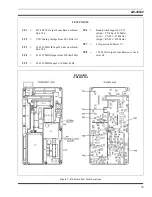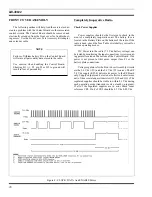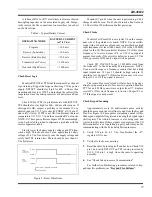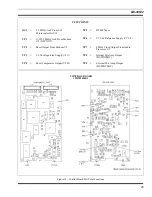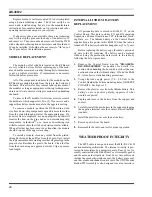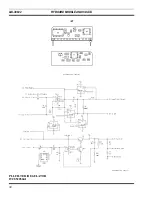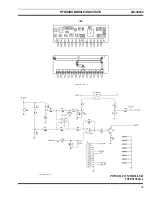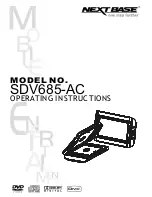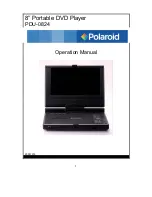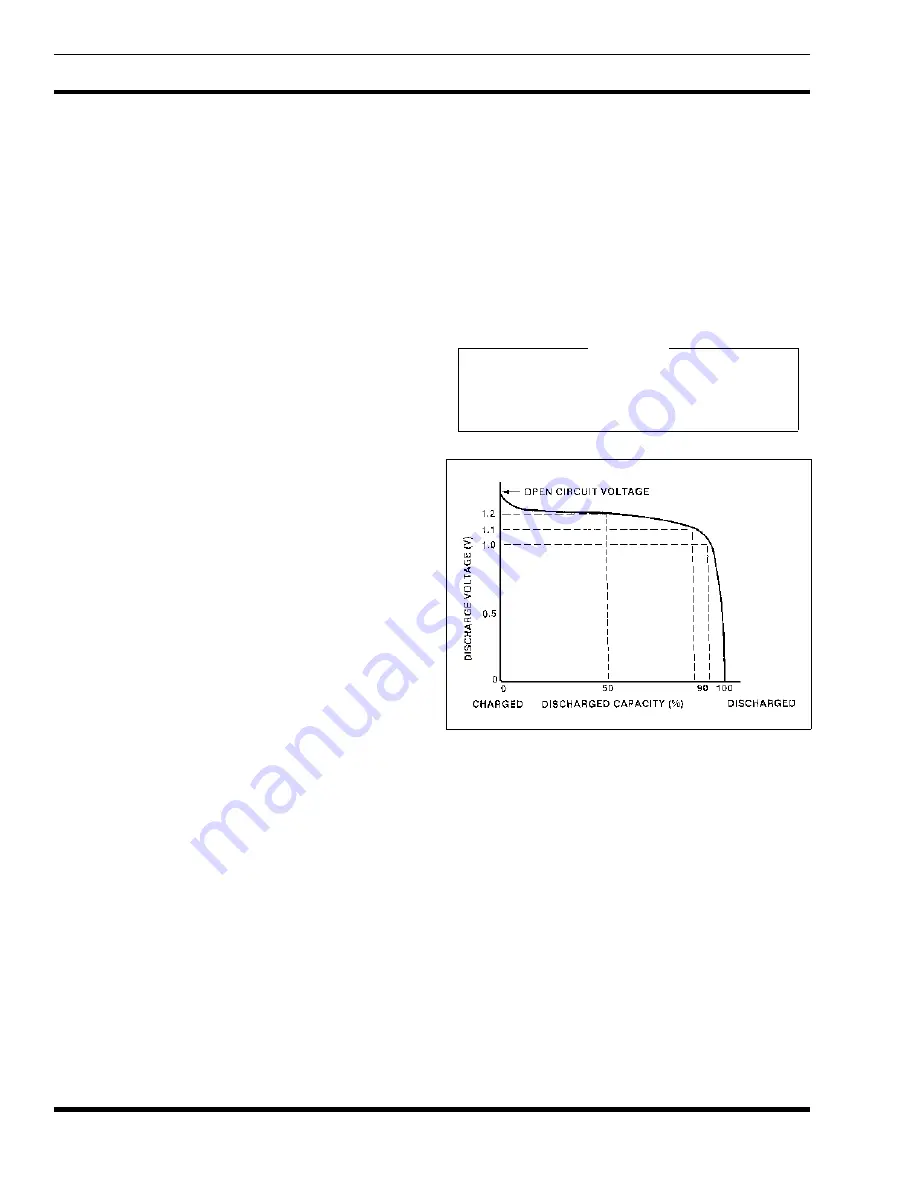
Radio contacts located on the top of the pack include
switched power, ground, the speaker enabling (shorting)
contacts and a continuous power contact. Four (4) charging
contacts are located on the rear side of the battery pack.
These contacts provide connections to the slip-in type charg-
ers or vehicular chargers/repeaters while the battery pack is
still connected to the unit. The battery charging contacts are
diode protected from external shorts.
CHARGING THE BATTERY PACKS
After receiving a new battery pack from the factory, it
should be fully charged before it is placed into service. This
also applies to batteries that have been stored for long peri-
ods.
Chargers are available with nominal charge times of 1
hour (rapid) and 14 (standard) hours. Combinations include
single and multi position standard and rapid charge units.
The rapid chargers utilize an internal thermistor in the battery
pack to sense temperature and automatically control charge
rate of the battery. This allows a rapid charger to charge at a
maximum rate without overheating the battery. All battery
packs can be charged in less than 1 1/2 hours in a rapid
charger. Nominal full charge time in a standard charger is 14
hours. For specific instructions for the particular charger,
refer to the applicable charger’s Operating Manual.
A fully charged battery pack should provide an open
terminal voltage greater than 7.5 Vdc (typically 9 Vdc). A
fully discharged battery pack should be no less than 6 Vdc.
When the battery pack drops below approximately 6.8 Vdc
the radio will warn the operator with an alert tone.
REDUCED CAPACITY CONDITION
Rechargeable batteries can develop a condition of re-
duced capacity sometimes called "Memory Effect". This
condition can occur when a battery is continuously charged
for long periods of time or when a regularly performed duty
cycle allows the battery to expend only a limited portion of
its capacity.
If the battery pack is seldom used and left on a continu-
ous charge for long periods it may develop reduced capacity.
On the first discharge cycle, the capacity may be signifi-
cantly lowered, reducing useful service hours.
The reduced capacity condition should be suspected on
any rechargeable battery pack showing signs of reduced
capacity. If reduced capacity is in fact a problem, the follow-
ing procedure may restore useful capacity:
1.
Discharge the battery pack at a normal discharge rate
until the output voltage is approximately 1 Volt per cell.
This equals 6 Volts output for the battery packs. Refer
to Figure 14. Note the flatness of the discharge curve
from 0% - 90%. Experience shows discharging below
the "knee" is not necessary.
2.
Complete a full charge cycle using an Ericsson GE
charger.
3.
Repeat steps 1 and 2. Performing this deep cycle at least
twice should be sufficient to restore battery pack capac-
ity.
RECHARGEABLE BATTERY
PACK DISPOSAL
Under specific state laws, it may be illegal to dispose of
rechargeable batteries, rechargeable batteries packs and/or
products powered by rechargeable batteries except in accord-
ance with specific procedures. Special collection systems are
in place in certain states. Call Toll Free 1-800-822-9363 for
specific procedures for returning rechargeable batteries in
your state.
NOTE
This procedure is easily completed using Discharge
Analyzer 19B801506P9 and Rapid Multi-Charger
19B801506P16 or P18.
Figure 14 - Typical Cell Discharge Curve
LBI-38632
28


